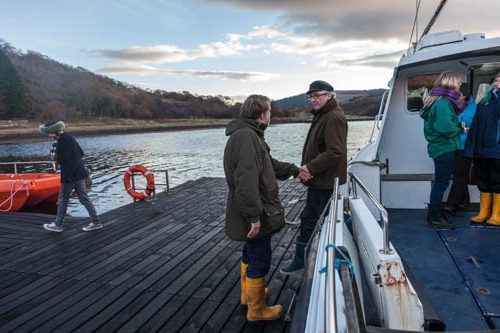Loch Sunart © George Longmate
The Community Empowerment (Scotland) Act 2015: Relevance to Coastal Communities
On 24 July 2015, the Community Empowerment Bill received Royal Assent and became an Act. It is one of the most recent legislative responses seeking to give communities a range of new powers, to strengthen the community voice within public service delivery whilst also aiming to build more effective partnerships between national and local government – and all other sectors which affect local communities.
The Act is focused on improving public service outcomes for communities, through a process of improving community planning – as well as directly empowering communities through the acquisition of land and buildings and having new rights to participate in the way public services are delivered. In effect, this means that communities will have a greater say in many of the processes that affect their lives.
Although terrestrial land rights sit firmly at the centre of the dialogue on community empowerment and community planning, the implications for coastal and inshore resource management have yet to be explored in detail.
A number of new principles and opportunities could be aligned here, however. Given that management of Scotland’s marine assets is already a devolved issue, and considering the reallocation of Crown Estate responsibilities to the Scottish Government through the Scotland Act 2016 and the Scottish Crown Estate Bill (2018), there is a significant opportunity to explore how the fundamentals of the Community Empowerment Act might be translated to apply to the local marine assets, as well as the terrestrial assets, of coastal communities.
The Act contains 11 parts, only some of which would have direct implications for community participation in the management of marine assets and activities.
Read the Policy Briefing on the Community Empowerment Act below, if you would like to know more. It looks at some new tools or innovative approaches that may be applied from the relevant sections of the Act, for coastal communities seeking to become more involved in inshore management.
Namely, these are: Community Planning, Participation Requests, Asset Transfers, Community Rights to Buy Land and Participation in Public Decision-Making.
